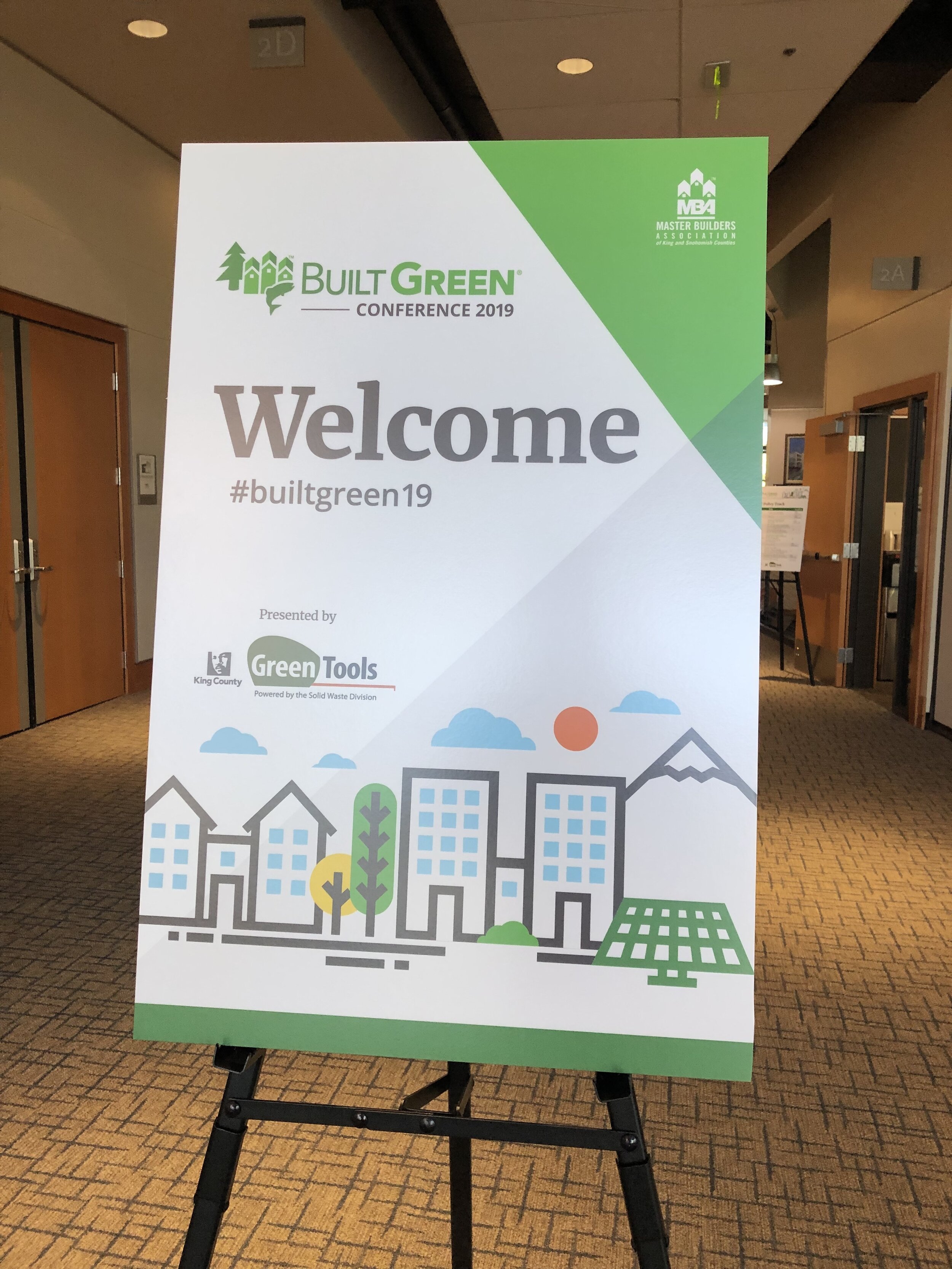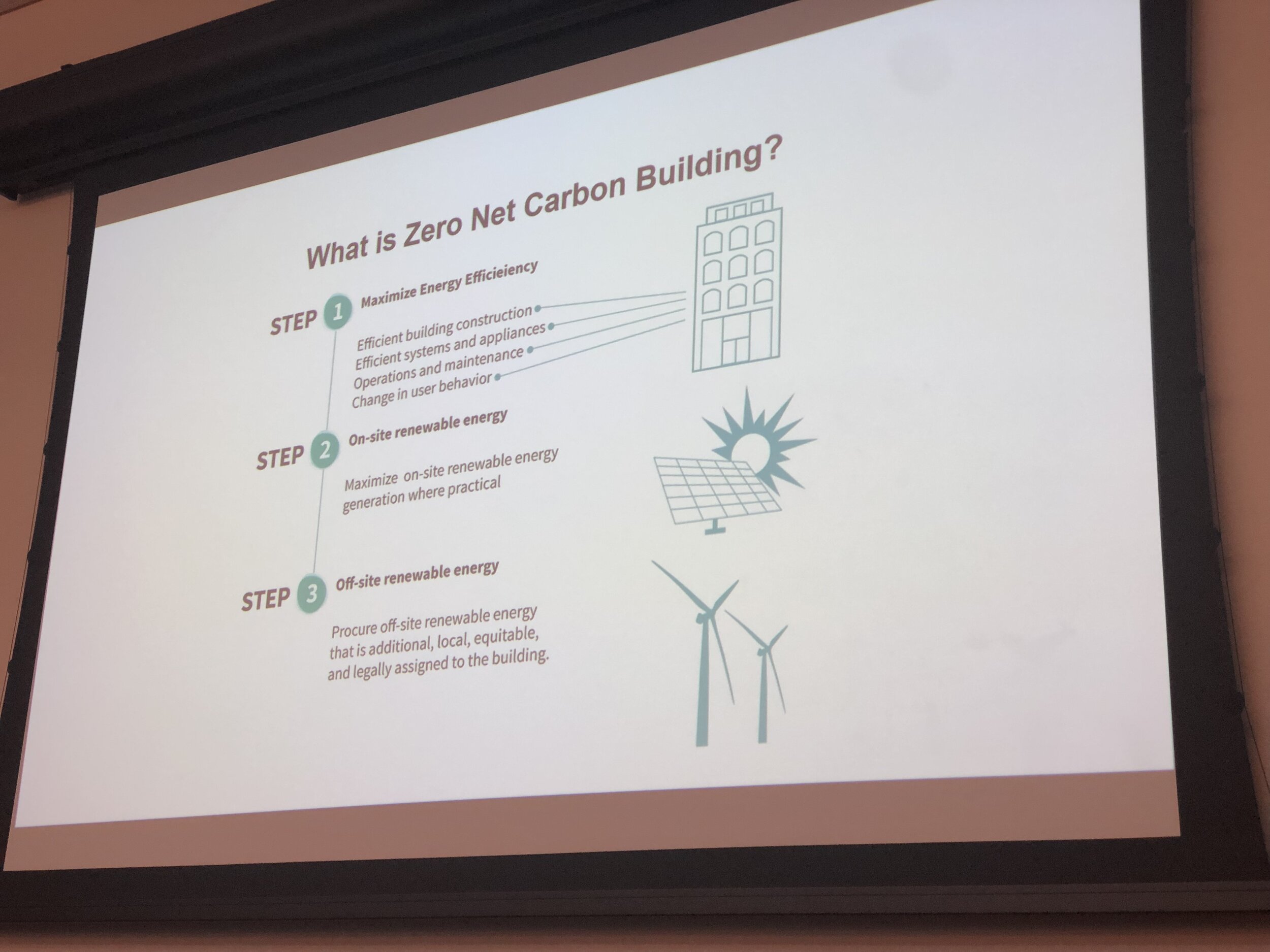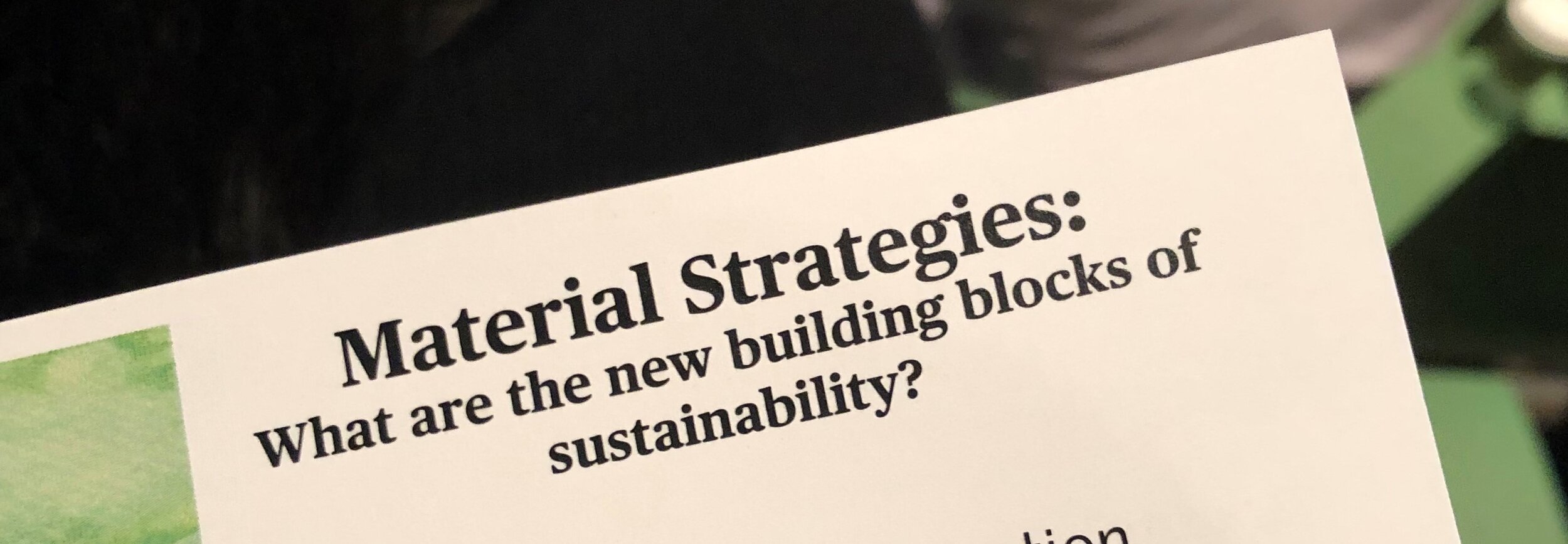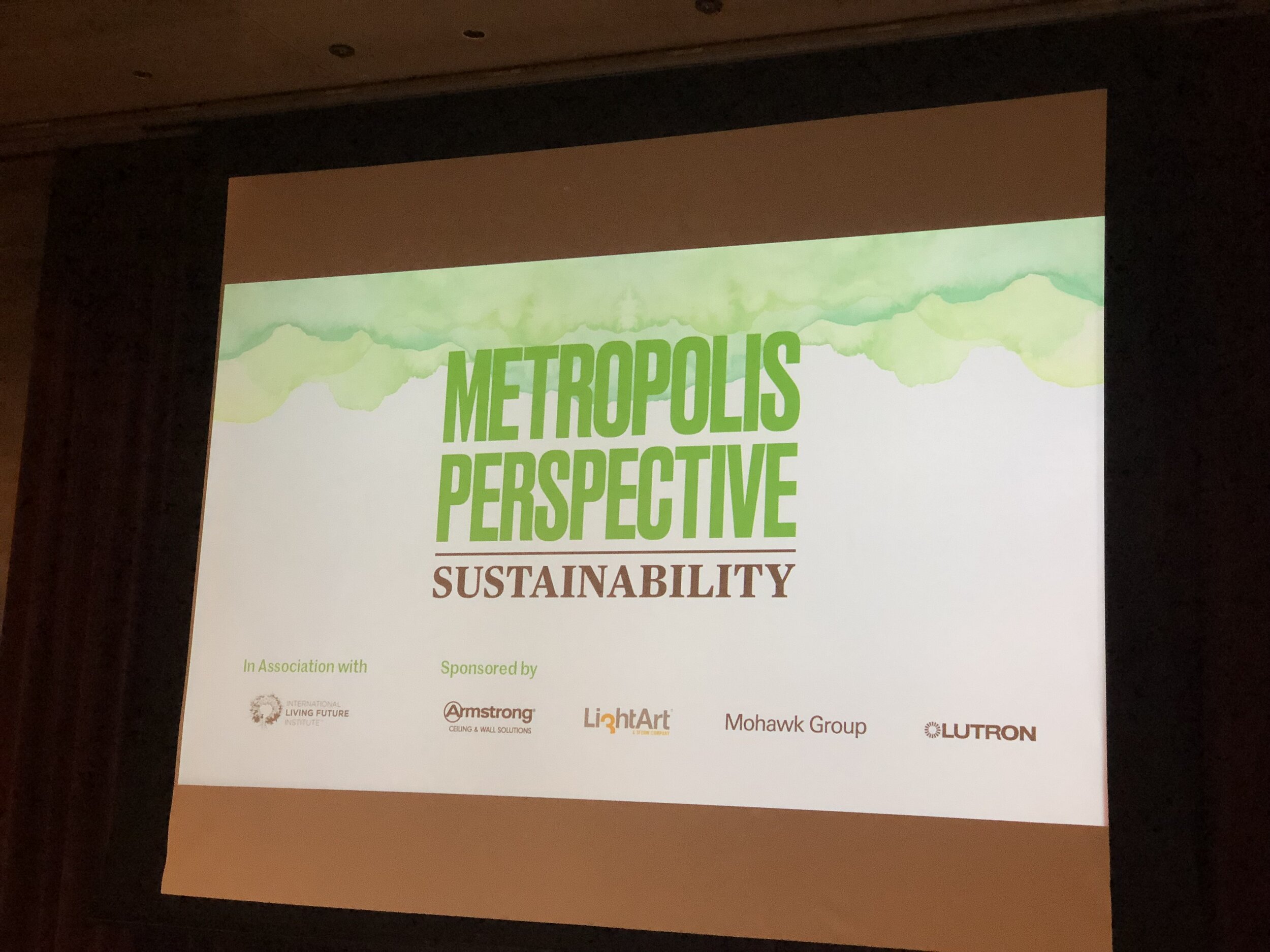Seven Statements That Made a Sustainable Impact on Me
Hi! Ace here.
I had the privilege of being able to attend not one but TWO different events on sustainability this past Thursday and Friday. The first, the BuiltGreen Conference, is hosted by the Master Builders Association of King and Snohomish County and focused not simply on green buildings but on the policies that incentivize this type of construction and the communities that are impacted by it.
The second event, Metropolis Magazine’s Perspective: Sustainability, was a day-long symposium that covered the work being done by architects, product manufacturers, researchers, and other professionals to address sustainability and the environmental impact of the built environment. Both of these events had a major impact on myself and my interest in designing inclusive places that are environmentally sustainable as much as they are socially sustainable; as such, here are seven quotes to note that left a sustainable impact on me.
1.“How is the city incentivizing remodels and urban infill?”
This statement was made by Scott Guter from the city of Kirkland, Washington, the home of Costco and a bedroom community within driving distance of the cities of Everett, Bellevue, and Seattle. Kirkland is dealing with a challenge in that it has created an incentive program for green building, however the only individuals who are taking advantage of the program are those who have the financial resources to build, for lack of a better term, luxury single-family homes. Thus in lies a conundrum; remodels and urban infill are two methods of development that have been proven to be just as effective in reducing carbon impacts as much as designing high-performance (read: very efficient / green) new construction, which are not covered in this kind of incentive program. What this means is that when creating policy for green building, a holistic view and holistic approach to supporting new development, including the emphasis on reusing materials and building housing more closely to jobs and transit, needs to be taken into account to help drive down carbon emissions in a multitude of ways all at once.
2. “It cost more to apply for funding than we would have received.”
This is something that I personally am aware of, however I believe many people do not understand in regards to Affordable/publicly-subsidized housing, which is that the cost to build this type of housing is typically the same as market-rate (“luxury”) housing but that the process needed in order to secure funding creates additional costs that a typical project would not face. This conversation was presented by Tobias Levey of Forterra, a company that is focused on impact investing, originally only for land conservancy but now aimed at reducing the cost of financing Affordable housing as well. During the discussion he stated that one of the challenges of a recent building was that for some of the potential sources of funding the cost of applying was higher than the amount that they would have received . This gets to an essential conversation that must happen in any jurisdiction facing housing affordability problems, and that is that additional funding needs to be made ready so that housing justice is not exclusive of environmental justice and the process by which this money can be obtained must be as simple and expedient as possible.
3. “Death By 1,000 Cuts”
If you have designed any project in Seattle that is more than 8 units of housing (and sometimes even less than that), you understand the sheer amount of hoops that one must know and jump through in order to get a project completed. This comment was made during the Density Done Right panel, a discussion about addressing the current lack of housing in the region and the methods by which housing production is affected by the current policies we have. There are some (valid) concerns that additional green building requirements will simply increase the cost of housing production or reduce the amount of projects that are actually feasible. With that in mind, it is critical in Seattle to re-examine our policies and priorities to ensure that the development will occur will contribute to alleviating the current housing crisis and be high-performing AND that it the process to its realization is predictable and expedient while cognizant of those goals.
4. “The cleanest and cheapest energy is the energy we don’t use.”
The final result, permacity.
Architecture firm A2M gave the closing keynote at the conference, which covered their concept of Permacity, or architectural design and building that begins to regenerate the environment that we have degraded. At the beginning of the talk, the firm posed the question: “what is the cleanest energy?” (I guessed people power). The thought is, as opposed to focusing on making the energy we use cleaner, what we need to do is actually reduce the amount of energy our buildings use. This strategy, embodied in the Passive House certification, then allow the remaining—much smaller—amount of energy can be taken care of by on-site renewables and achieve net-zero energy usage. From there the building can then focus on reducing the embodied energy in its materials and aim for carbon neutral, and then after that is done it can aim for self-sufficiency, or being able to support its own operation without the need for larger infrastructure. If all this is then achieved, the building can begin to be designed in a regenerative way, Permacity. The firm’s first foray into this level of resilient design, outside the city of Paris, will be aiming to absorb more CO2 than the entirety of all of Paris’ trees.
Suffice to say, the end of this keynote left me excited for the possibilities of the future of building and the potential of Passive House design. And that was only one event!
5. “We can’t change things if we don’t know where we are”
Starting off the round of discussions at the Metropolis Symposium on Sustainability, this was an obvious statement but a very critical one. Like any goal that someone may have, how do you know if you’ve made progress if you haven’t identified where you started from? During this discussion the importance of transparency in all facets of material production was heavily emphasized; and with good reason. As stated during this panel, in Seattle, because most of our energy comes from renewable resources, 86% of the carbon footprint of new buildings comes solely from embodied energy (the energy it takes to produce something) in the products that are used. It is important to set baselines on our materials and energy consumption of buildings to then have a place to start from in creating improvements on our current products.
6. “It’s no longer acceptable to privatize the profit and socialize the risk”
Though I remember that George Bandy was not on this Carbon Goals panel, he did make this statement during the comment portion of it and the words really resonated with my personal experiences in the field. In architecture, it is no surprise that many design professionals view each other as competitors more so than collaborators. Given this paradigm, it is second nature for offices and firms to develop new resources and standards to improve their workflows but more so give them an edge over others. With respect to addressing the carbon footprint of the materials we use and methods by which we create, this can no longer be the case. We will not be able to get to where we need to go on fighting climate change if we are fighting against each other to solve even the simplest problems of green building. Fortunately the Embodied Carbon in Construction Calculator (EC3), a development being led by Kate Simonen, will be an open-source tool that anyone from the industry can use and contribute to. The EC3 will be premiered at this year’s GreenBuild Conference in November.
7. “When will we get to the point of sustainability as ubiquitous as fire sprinklers?”
Rounding out the day of speakers at the Metropolis event, I found this statement to be an important one for design professionals. There are many times we face roadblocks to implementation of sustainable materials or strategies, not because we lack the knowledge to push for it, but because there is an unwillingness by the client to pursue it. In Seattle, many housing developers are looking to sell their projects upon completion of construction and because they are not holding it for longer are not interested in potential energy and operation costs of the building. This creates a scenario where a designer might suggest the project pursue a sustainability certification and the owner wants to know how much it is going to cost and where that cost will be made up. In some cases, until higher standards for performance are mandated by a jurisdiction, it will simply not happen. This is important to keep in mind as we set goals to achieve carbon neutrality in the United States by 2050. What steps will be necessary on a policy level to make that happen?
—————-










